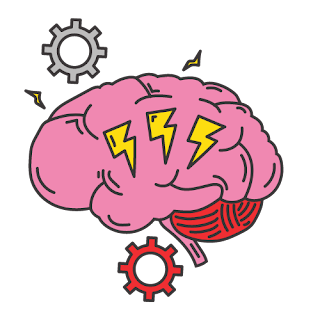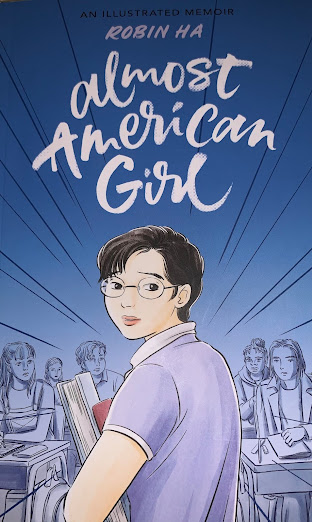(Don't) Call Me Crazy: 33 Voices Start the Conversation about Mental Health
Biography
Source: http://kellybjensen.com/, Kelly Jensen at BOOK RIOT
This anthology promotes a healthier outlook on mental illness by showcasing the real and raw untold stories of people who have ongoing mental health issues in an easily understandable format for young adult readers. The narrators discuss topics such as depression and anxiety disorders to other, more visual and physical disorders like misophonia (strong reactions to sounds) and trichotillomania (the desire to pull out body hair) in a humorous way that lessens the intensity that these subjects hold when brought up in conversation. The use of humor as an outlet is engaging to young readers and opens up the conversation on mental health to an otherwise hesitant group of individuals. The humor also shows the level of comfort that these narrators have with their mental disorders after struggling with mental health for so long. They have come to a point in their lives where they understand that their mental health doesn’t define them and instead understand that it is part of them. They tell their tales of struggles before and after diagnosis and share their coping mechanisms that help them get through their days whether it’s through medication, therapy, a good support system, or a combination of all. The anthology tackles the harsh reality of dealing with mental illness while showing it in a light that doesn’t shame anyone who has it. It instead encourages the embracing of all aspects of mental health for people who may have it and for others who are surrounded by it through family and friends. Disorders like obsessive compulsive disorder and borderline personality disorder are displayed in media as intense mental disorders that prohibit normal day to day function. Although these cases do exist, there are also many cases where symptoms aren’t displayed as openly and where they go undetected in people because of the lack of extreme symptoms. Media also does little to downplay the glorification of mental disorders like OCD and BPD, where illness is romanticized along with the unsettling symptoms of self harm that are seen as endearing instead of dangerous. Because of the misinformation through media, and with certain aspects of trauma that are hard to discuss and even harder to read about (such as sexual assault and suicide), mental health isn’t openly discussed and creates an unfamiliar territory that gives little clarity to those who need it. The fear of the unknown is a common concept that terrifies everyone, especially the younger demographic. Combine that with the idea of the unknown being yourself and it can create a world of insecurity and unease in you. The stigma that mental health is something to avoid talking about or that it’s strictly meant for “crazy” people is a dangerous idea that only harms all people struggling with mental health. Everyone is susceptible to endure mental health issues, so why not make the conversation easier to access.
Instructional Activity
Objective: Students will demonstrate and apply their understanding of mental health from the book (Don’t) Call Me Crazy by creating relevant pieces of blackout poetry from the book
Common Core Standards
Knowledge of Language:
CCSS.ELA-LITERACY.L.9-10.3
Apply knowledge of language to understand how language functions in different contexts, to make effective choices for meaning or style, and to comprehend more fully when reading or listening.
Craft and Structure: CCSS.ELA-LITERACY.RI.9-10.4 Determine the meaning of words and phrases as they are used in a text, including figurative, connotative, and technical meanings; analyze the cumulative impact of specific word choices on meaning and tone (e.g., how the language of a court opinion differs from that of a newspaper).
Resources and Preparation
For the warmup activity, you will either need to print out copies of the “Anticipation Guide Handout” or allow for adequate time for students to copy down the outline on their own. For the “Blackout Poetry” activity, either provide students copies of the page(s) they choose, or provide a clear sheet and markers so they do not have to mark in their book.
Before Reading
Before reading, students will complete the “Anticipation Guide Handout,” and have them focus their topic on statements they have heard about mental health. Allocate about 10 minutes for students to write down their statement about mental health and check whether or not they agree or disagree on the “Before Reading” side. After completion, allow about 5-10 minutes for discussion, asking students to share some of their statements.
During Reading
Have students continue working on the Anticipation Guide, asking them to jot down the lines and pages they find relevant to their statements as they read.
After Reading
After the reading is complete, have the students complete the Anticipation Guide by marking “Agree” or “Disagree” on the “After Reading” side and adding a brief explanation as to how they came to that conclusion before moving on to the Blackout Poetry activity (preferably to be done as homework, but can allocate about 15 minutes of class to complete).
The Blackout Poetry activity should take roughly 40 minutes to complete, including set up, then allow 5-10 minutes for students to share what they have. To begin, have students choose a page or two from one of the essays that resonated with them (having them choose sometime before the day of the activity can aid in preparation and save time). If possible, make copies of their chosen pages and distribute them to the appropriate student. Otherwise, pass out clear sheets to each student as well as a dark marker. Before starting, take a moment to describe Blackout Poetry and how it is done before instructing students to create a piece either on the specific mental illness their chosen essay from the book is on, or on mental health in general.
Resources
This is a slam poem that could be a good introduction for the topic of mental illness. Roche uses the format of “countdown” slam poem, with each number representing somebody dying by suicide. Statistically, somebody commits suicide every 40 seconds and Roche marks each death clearly in the course of his performance. Roche’s poem not only introduces how widespread and prevalent our mental health crisis is, but he also provides an intimate perspective on depression. This intimate perspective is similar to the personal essays found within (Don’t) Call Me Crazy, but as a slam poem, Roche’s style and diction differs greatly from the book. A slam poem on mental health not only introduces the topic in an engaging way, but also allows students to engage with different literary forms focusing on the same topic, which would allow them to analyze the similarities and differences between the two.
“Patrick Roche - Every 40 Seconds.” YouTube, uploaded by Button Poetry, 23 Oct. 2017, www.youtube.com/watch?v=jXyDtwtNS7s.
This article is about destigmatizing “messiness” and deconstructing narratives of morality in regards to cleanliness. McCombs relates her struggles to “keep house” in the wake of mental illness and interviews KC Davis, a woman with ADHD and postpartum depression who uses her Tik Tok platform to reframe care tasks as entirely functional, not moral. Davis uses her “Struggle Care” platform to reach out and help people with mental illness, disability, and other issues that make it difficult to maintain standards of cleanliness. She provides tips, tricks, and systems to help others who are struggling with the shame of messiness. In doing so, she seeks to destigmatize not only messiness, but also mental health. Just like mess, Davis wants to reiterate that mental illness is “morally neutral.” Her platform treats mental illness with the validity as physical disability. This paired with her open conversations about the messy and ugly side of mental illness helps to destigmatize this conversation. A reading of this article in conjunction with (Don’t) Call Me Crazy could spark a conversation about shame around mental illness and the ways it affects people’s daily lives. How are mentally ill people shamed morally? How do people hide the negative ways their mental illness affects them? How do we alleviate shame around these topics? Videos from KC Davis’s Tik Tok could also be shared instead in order to condense the topic/add more class engagement through visuals.
McCombs, Emily. “Having A Messy House Doesn’t Make Me A Bad Person ― Or A Bad Mom.” HuffPost, 9 Aug. 2021, www.huffpost.com/entry/struggle-care-kc-davis_n_61037ff2e4b000b997e04ea8.
This article details ways to destigmatize mental health issues. Greenstein provides nine different strategies for how to combat stigma. After reading this article students could compare the strategies detailed with (Don’t) Call Me Crazy. How does the book help combat stigma? What strategies are used and what aren’t? What are other ways you could help combat stigma?
Greenstein, Luna. “9 Ways to Fight Mental Health Stigma | NAMI: National Alliance on Mental Illness.” National Alliance on Mental Illness, 11 Oct. 2017, www.nami.org/blogs/nami-blog/october-2017/9-ways-to-fight-mental-health-stigma.
This article is a good introductory piece to the (Don’t) Call me Crazy. It provides some of the history behind the word while providing background on its negative connotations. It also addresses a prevalent theme of the book, which is people being entirely defined by their mental illness. This article introduces the concept of “person first” language and addresses some of the reasons why we should reframe our language around mental illness, which is what Don’t Call Me Crazy is primarily trying to do.
MentalHealth.gov provides information regarding various mental illnesses. Their goal is to educate and guide the general public, health and emergency preparedness professionals, policy makers, government and business leaders, school systems, and local communities. This website advocates for widespread mental health awareness and directives. This resource would be incredibly helpful in teaching (Don’t) Call Me Crazy as it provides a practical, policy-based perspective to the content covered in the book.
MentalHealth.gov. U.S. Department of Health and Human Services, www.mentalhealth.gov/about-us. Accessed 12 Dec. 2021.
- This resource would be helpful specifically in the lesson plan that has been outlined above. Nyers provides background information on blackout poetry and its artform. He also includes a video on his page that provides a visual aid to the creation of blackout poetry that would be incredibly helpful in introducing it to students. Nyers’s page also includes other examples of blackout poetry that can be used as examples and inspiration for students’ creativity.
- This article by Jennifer Rock takes the concept of “Spoon Theory,” an idea normally used to help describe living with invisible disabilities and chronic illnesses, and applies it to people struggling with mental illness. “Spoon Theory” provides a lens through which to understand how people struggle with accomplishing certain tasks. Rather than just providing anecdotes, “Spoon Theory” provides a physical reference point from which to understand others' struggles. Rock includes visual aids throughout her article in order to explain how this application of “Spoon Theory” works and the toll that mental illnesses like depression and anxiety take on people’s everyday lives.
- This is another slam poem that deals with the topic of mental health. Neil Hilborn provides a personal perspective into how his OCD affects his relationships. The speech patterns and repetition he employs is used to mimic the intrusive, repetitive compulsions that he has in his everyday life. This poem provides another viewpoint into a specific mental illness, and can help students understand how form can affect meaning. As Hilborn employs rhetorical devices such as repetition, imagery, and parallel structure to create the visceral feeling of living and loving with OCD.
Ewing, Rachel. “‘That’s Crazy’: Why You Might Want to Rethink That Word in Your Vocabulary - Penn Medicine.” Penn Medicine News, 27 Sept. 2018, www.pennmedicine.org/news/news-blog/2018/september/that-crazy-why-you-might-want-to-rethink-that-word-in-your-vocabulary.
Nyers, Michael. “What Is Blackout Poetry?” Fade into a Blackout, 30 Oct. 2020, www.fadeintoablackoutpoetry.com/what-is-blackout-poetry.
Rock, Jennifer. “Spoon Theory For Depression And Anxiety - Invisible Illness.” Medium, 14 Dec. 2021, https://medium.com/invisible-illness/spoon-theory-659e3a755c81.
“Neil Hilborn - OCD.” YouTube, uploaded by Button Poetry, 23 July 2013, www.youtube.com/watch?v=vnKZ4pdSU-s.



